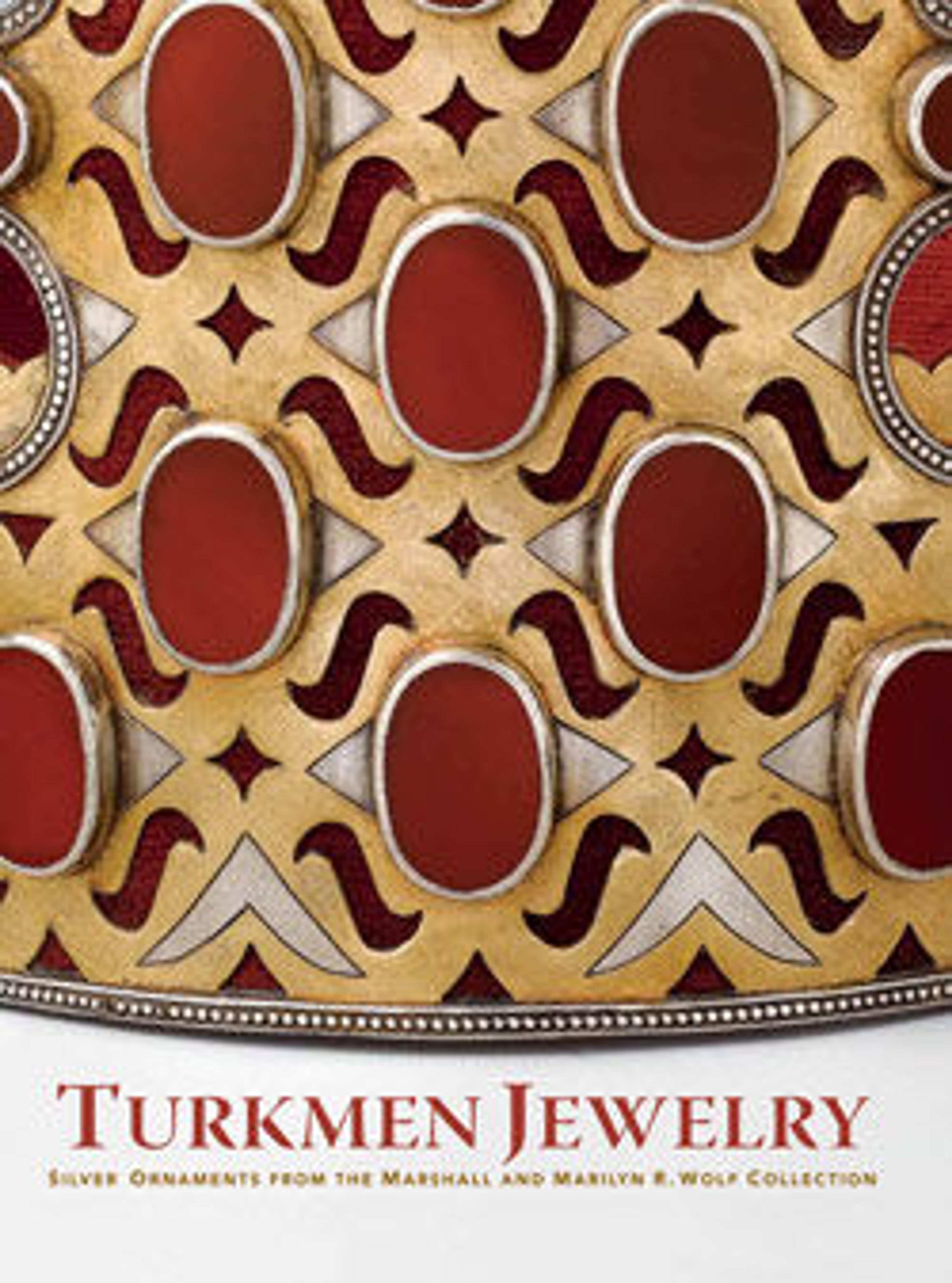Amulet Holder
This Qur'an holder is a doga-kumus, a small box that hangs from a chain or a leather strap that was hung over the shoulder or around the neck. This type of silver jewelry was used to keep Muslim prayers, talismans, keys, or coins, and was typically worn by older women. According to an eighteenth-century legend, these hanging Qur'an holders symbolize Islamic power over evil spirits. The front of the box is decorated with gilded and embossed silver disks in half-moon and triangle shapes, set with carnelians. Silver wire and horn motifs decorate the border of the plates and twelve spherical pendants hang from six double-link chains.
Artwork Details
- Title: Amulet Holder
- Date: late 19th–early 20th century
- Geography: Attributed to Central Asia or Iran
- Medium: Silver and brass alloy; fire-gilded, with ram's-head terminals, loop-in-loop chains, bells, decorative wire, gilt-applied decoration, table-cut carnelians, and applique discs on leather
- Dimensions: Leather strap:
H. 17 13/16 in. (45.2 cm)
W. 1 13/16 in. (4.7 cm)
Qur'an Case:
H. 7 in. (17.8 cm)
W. 7 13/16 in. (19.8 cm) - Classification: Jewelry
- Credit Line: Gift of Marshall and Marilyn R. Wolf, 2005
- Object Number: 2005.443.8
- Curatorial Department: Islamic Art
More Artwork
Research Resources
The Met provides unparalleled resources for research and welcomes an international community of students and scholars. The Met's Open Access API is where creators and researchers can connect to the The Met collection. Open Access data and public domain images are available for unrestricted commercial and noncommercial use without permission or fee.
To request images under copyright and other restrictions, please use this Image Request form.
Feedback
We continue to research and examine historical and cultural context for objects in The Met collection. If you have comments or questions about this object record, please contact us using the form below. The Museum looks forward to receiving your comments.
